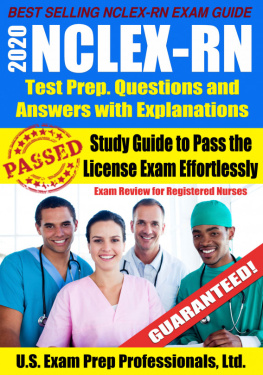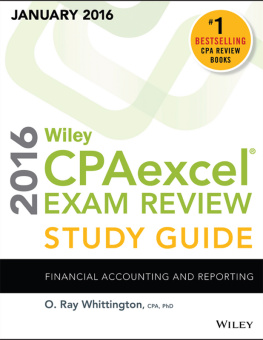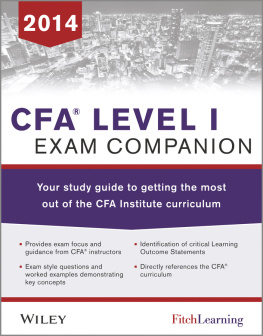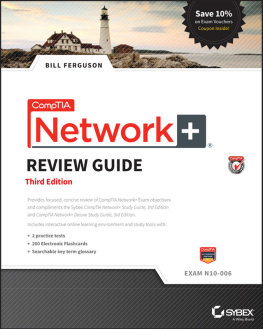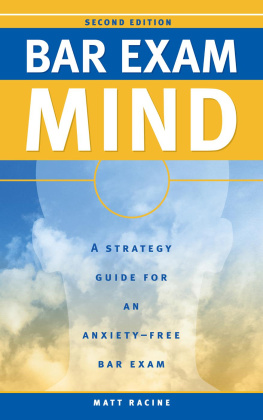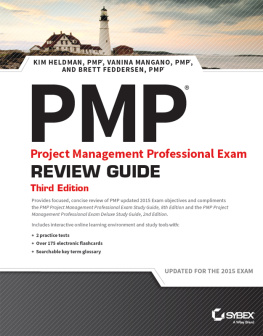This edition first published 2013 by John Wiley & Sons Ltd
2013 7city Learning
Registered office
John Wiley & Sons Ltd, The Atrium, Southern Gate, Chichester, West Sussex, PO19 8SQ, United Kingdom
For details of our global editorial offices, for customer services and for information about how to apply for permission to reuse the copyright material in this book please see our website at www.wiley.com.
The right of the author to be identified as the author of this work has been asserted in accordance with the Copyright, Designs and Patents Act 1988.
All rights reserved. No part of this publication may be reproduced, stored in a retrieval system, or transmitted, in any form or by any means, electronic, mechanical, photocopying, recording or otherwise, except as permitted by the UK Copyright, Designs and Patents Act 1988, without the prior permission of the publisher.
Wiley publishes in a variety of print and electronic formats and by print-on-demand. Some material included with standard print versions of this book may not be included in e-books or in print-on-demand. If this book refers to media such as a CD or DVD that is not included in the version you purchased, you may download this material at http://booksupport.wiley.com. For more information about Wiley products, visit www.wiley.com.
Designations used by companies to distinguish their products are often claimed as trademarks. All brand names and product names used in this book are trade names, service marks, trademarks or registered trademarks of their respective owners. The publisher is not associated with any product or vendor mentioned in this book. This publication is designed to provide accurate and authoritative information in regard to the subject matter covered. It is sold on the understanding that the publisher is not engaged in rendering professional services. If professional advice or other expert assistance is required, the services of a competent professional should be sought.
Required disclaimer:
CFA Institute does not endorse, promote, or warrant the accuracy or quality of the products or services offered by 7city Learning or John Wiley & Sons Ltd. CFA Institute, CFA, and Chartered Financial Analyst are trademarks owned by CFA Institute.
Certain materials contained within this text are the copyrighted property of CFA Institute. The following is the copyright disclosure for these materials: Copyright, 2013, CFAInstitute. Reproduced and republished from 2013 Learning Outcome Statements with permission from CFA Institute. All Rights Reserved.
These materials may not be copied without written permission from the author. The unauthorized duplication of this Exam Companion is a violation of global copyright laws and the CFA Institute Code of Ethics. Your assistance in pursuing violators of this law is greatly appreciated.
Disclaimer: This 7city/Wiley CFA Level I Exam Companion should be used in conjunction with the original readings as set forth by CFA Institute in their 2013 CFA Level I Study Guide. The information contained in this Exam Companion covers topics contained in the readings referenced by CFA Institute and is believed to be accurate. However, their accuracy cannot be guaranteed nor is any warranty conveyed as to your ultimate exam success. The authors of the referenced readings have not endorsed or sponsored this Exam Companion.
A catalogue record for this book is available from the British Library.
978-1-118-56034-1 (paperback) ISBN 978-1-118-56031-0 (ebk)
ISBN 978-1-118-56032-7 (ebk) ISBN 978-1-118-56033-4 (ebk)
Set in 10/14 pt Times New Roman by Sparks Publishing Services Ltd www.sparkspublishing.com
Printed in Great Britain by TJ International Ltd, Padstow, Cornwall
Foreword by Pamela Peterson Drake, PhD, CFA
The CFA Level I exam is the first and broadest of the three exams in the CFA Program. The Level I exam is a challenge primarily because of the breadth of the material candidates preparing for this exam must have a basic foundation in accounting, economics, statistics, corporate finance, and investments. Every candidate comes with a different background and skill set, so the areas a candidate may need to emphasize may differ. But all candidates should be familiar with the readings in the 18 study sessions.
The Ethics topic, which you will see again on Levels II and III, is focused on the Code of Ethics and the Standards of Professional Conduct, but dont forget to look at the CFA Institute Professional Conduct Program, which delineates the process of enforcement with the possible revocation of membership, candidacy, or, in the extreme, the use of the CFA designation. Also, dont overlook the Global Investment Performance Standards (GIPS), which focus on the ethics of reporting investment results. Understand both the why and the how of reporting results compliant with GIPS.
The Quantitative Methods topic covers financial mathematics, probability, and statistics. While the emphasis of the learning outcomes is on calculations, dont just focus on the mechanical; you will remember and be better prepared to apply the calculations if you understand the math or statistics behind the equations. Youll notice that Technical Analysis is tacked on to Quantitative Methods; you neednt become an expert in Elliott Wave Theory, but you need to know that some practitioners use technical analysis and that there are common approaches to analysis of patterns. Key, however, is recognizing the difference between technical analysis and fundamental analysis.
The coverage of macro- and micro-economics is similar to what you would find in the introductory courses in each, but remember that the focus is on how the analyst will use this knowledge in the analysis of an industry or a company. Therefore, as you read this material, think about the implications for financial analysis. As with all the topics, you also need to think globally, and in the context of Economics this means understanding the benefits of international trade as well as knowing the basics of exchange rates.
The biggest topic in terms of the weight is Financial Reporting and Analysis, which encompasses what we more familiarly refer to as accounting. You need to be familiar with financial statements how they are constructed and how they are linked to one another and then focus on specific accounting. This specific accounting sets the stage for the quality of financial statements, which is the closing subject of this topic.
The Corporate Finance topic is broad and encompasses many readings that are a bit out of proportion for its weight in the exam. However, this is material that is covered in a typical principles of finance course, and some of this material overlaps material elsewhere in the curriculum (e.g. financial ratios). Remember that the focus is on financial analysis and think about how investment and financing decision-making by a company affects its value.
Portfolio Management is a topic whose importance grows as you progress through the three levels of exams. At Level I, this topic spans the basics of portfolio theory and asset pricing. But dont forget the wealth planning component, and be sure to consider clients needs with respect to investment objectives, constraints, and risk tolerance. Be sure to consider how this topic relates to the ethics coverage.
The Equity topic includes descriptive information on markets, as well as the theory and evidence regarding market efficiency. The topic also covers fundamental analysis, which begins with the economy, and extends to the industry, and then finally the company. Keep in mind that some of this material links back to financial reporting and analysis.



